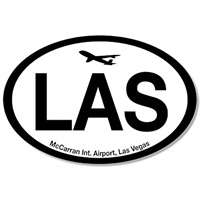Recent data shows a decline in passenger flow through the Vegas airport in August, signaling pressure on regional tourism as airlines cut back and travel demand softens. The airport recorded about 280,000 fewer travelers compared with the same month last year, a drop of 5.8 percent. Over the first eight months of 2025, cumulative traffic is down by 1.7 million passengers, a 4.5 percent decline from the prior year.
Much of the decline stems from reductions in domestic service. Spirit Airlines saw one of the steepest losses: it carried 409,886 passengers in August, nearly half its volume from the previous year, reflecting route cuts and restructuring under bankruptcy protection. For the year to date, Spirit’s traffic in the Las Vegas market is down roughly 32 percent. Meanwhile, Avelo Airlines accelerated its exit from the Vegas market, pulling outbound service earlier than planned. Some of its routes have been partially absorbed by competing low-cost carriers, including Breeze Airways, which has launched flights to destinations such as Redmond, Oregon.
International traffic through the Vegas airport was also lower in August, falling about 3.7 percent year over year. Through August, foreign travel at the airport is down approximately 2 percent. Canadian airlines registered especially steep declines: WestJet and Air Canada both saw passenger counts drop by more than 30 percent. Some international carriers posted gains, but their volume was not enough to offset the broader contraction.
The weakening airport numbers reflect broader strains in Las Vegas tourism. Operators of ancillary businesses tied to airport traffic — such as helicopter tours departing from the airport’s westside terminal — also reported declines. The airport’s downturn adds urgency to local efforts to stimulate visitor demand. The Las Vegas Convention and Visitors Authority has launched new promotional campaigns to counter the tourism slide.
Analysts attribute the airport decline to airlines optimizing their route networks, shifting capacity away from under performing markets, and focusing on profitability over coverage. Combined with economic uncertainty and reduced discretionary travel, these trends have tightened the operating environment for the Vegas airport and the broader visitor economy.



